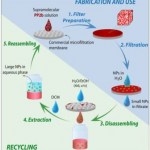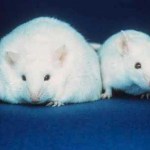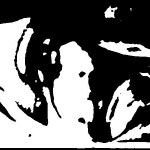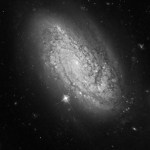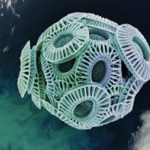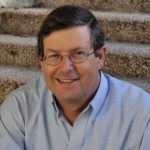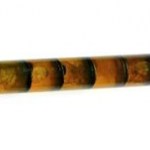
Last year we were number two; this year we're back on top: The Scientist annual survey of the best places to work in academia has once again ranked the Weizmann Institute #1 outside of the US. Even more impressive, in the survey, in which statements were rated on a scale of 1-5 for disagree/agree, the line: "My work gives me great personal satisfaction," scored a perfect 5. We think that pretty much says it all.
For more on what makes the Weizmann Institute such a great place, read this interview (translated) with its president, Prof. Daniel Zajfman, in Haaretz Daily.
Speaking of winning,…
Do you ever doubt your own memory? New research at the Institute suggests that some of the things we think we remember could be wrong. It seems that our brains are surprisingly willing to exchange a true memory for a false one, just on the basis of friends' claims. The scientists not only demonstrated just how easy it is to create false memories, they showed that the switch in memory has a signature pattern of brain activity. The most significant feature? They found strong connectivity between areas of the brain known to be involved in memory and learning, and the amygdala, which, among other…
The service tower attached to the iconic floating egg atop the Institute's Koffler accelerator (the "spaceship" in the photo, left) has recently been graced with a charming, shiny silver skullcap - an observatory dome. Formally known as the Martin Kraar Observatory, it houses two telescopes, and it figured in two of our recent press items. We spoke with observatory director Ilan Manulis of the Davidson Institute of Science Education:
WSW: Tell us about the telescopes.
IM: The larger one is a 41 cm. (16 in.) telescope. Due to special optical properties, it has the power of a much longer…
Two completely unrelated papers have got us thinking about chemical bonds. When we refer to chemical bonds, we generally mean covalent bonds: Atoms become "wedded," sharing electrons, and breaking them apart takes energy. By comparison, other types of bonds are weak attractions - mere flirtations, or mild sparks between hydrogen and oxygen in passing water molecules.
So why would a researcher in organic chemistry - a field based on carbon, the king of covalent bonds - be investigating the properties of non-covalent, hydrophobic bonds? The answer, of course, is that they can be used to create…
This week's Weizmann news stories: A "steam release valve" for inflammation, a "brake" for cell division and an "amplifier" for quantum signals.
The steam release valve mechanism also involves an amplifier - one that ramps up the inflammation signal in response to viral attack on a cell. When the signal reaches its peak, it trips a nearby protein called caspase-8, which then kills the amps, damping the signal back down. The scientists think that failures in this mechanism could be behind various inflammatory diseases.
The brake on cell division turns out to be our old friend p53. Thirty…
Disturbing experiences don't actually heighten our perceptions. In fact, according to new Weizmann research, in adverse conditions we're more likely to experience slightly different sights or sounds as being the same. The scientists think that this lumping together of similar sensory stimuli may be behind post-traumatic stress syndrome. The experiments showed that volunteers learning to distinguish between similar tones had much more trouble telling them apart when these were associated with a shockingly bad smell. Dr. Rony Paz explains that this blurring of our perceptions may have helped…
New research at the Institute sheds some light on a protein that could make it harder for overweight people to stick to a diet.
That protein helps regulate the effects of leptin - a hormone that reduces appetite and increases physical activity. People missing the leptin gene are invariably obese. It turns out, however, that this mutation is extremely rare; in fact, most chronically overweight people have too much leptin rather than too little. This happens because the body develops resistance to the hormone, so it amps up the signal, trying to be heard. It's also an indication that simply…
The other week, while many Israelis stayed home to clean their kitchens before the upcoming Passover holiday and thousands of preteens were screaming themselves hoarse over Justin Bieber in a Tel-Aviv park, another sort of cultural event was taking place nearby. Following the success of the beer and science event in Rehovot, we took Weizmann scientists and students to the bars and cafes of Tel Aviv.
No one was quite sure if it would work. Rehovot, after all, is the city of science, while Tel Aviv is the city of culture - of music, art and theater. But, it's also the city of nightlife, and it…
These guys are as adept with a lug wrench as they are with a mass spectrometer. Prof. Dan Yakir (second from right) and members of his group had to become licensed truck drivers to operate their newest equipment - which is all packed into a custom-built truck for hauling around the country. Until now, Yakir and his team have been working from the Yatir station - a fixed tower set in a pine forest on the edge of the Negev desert. This station is part of a global network that continuously measures carbon exchange and other nutrient cycles in different forest settings. Now, he and his team will…
Today's Weizmann Institute news stories include two new papers from the prolific lab of Prof. Yadin Dudai. The first is on a protein that boosts memory in rats. Dudai and his group have been investigating this protein for several years. Previously, they had managed to show that blocking the protein, even for a very short time, erases memories. Now, they have demonstrated that adding more of the protein to certain areas of the brain can strengthen memory. Note: They increased the protein via gene-carrying viruses that infiltrated the rats' brain cells - not a clinic-ready technique. But until…
Is having a beer and sandwich at the local pub the best way to improve your brain awareness? At least in the city of Rehovot one evening last week, those eating and drinking in a few select establishments got to hear Weizmann Institute neurobiology graduate students give informal talks and demonstrations. The event was a part of Brain Awareness week, an annual, international affair. The aim is not really to make people more aware of their brains (or their brains more aware), but to promote brain research.
Some participated in an experiment in which they found that a smell can help imprint…
Dark matter - that invisible stuff that is supposed to make up some 20% of the Universe - was thought up to explain a puzzling observation. The amount of mass we can see through our telescopes is not enough to keep galaxies from spinning apart. The existence of great quantities of hidden mass would provide the gravitational pull needed to form those galaxies and enable them to rotate in the way that they do.
But not everyone is willing to buy the idea that the Universe is cloaked in "invisible cloth." An alternate theory, first put forward by Weizmann Institute astrophysicist Prof. Moti…
The day has finally come. In our very first post, back in June, we wrote that the launch of the new website was slated for later in the summer. In fact, by then we had already been at it for months, and if we had known how much longer it was going to take, we might have thrown up our collective hands on the spot. So we are quite pleased to say that our new website is now on line, and it even seems to work most of the time. There are, of course, some new articles to read - a new wrinkle in insulin production, why fish scales shine, molecular Frisbee, and more - as well as press releases and…
Some of the best moments in my job as a Weizmann science writer are the times when a scientist I'm interviewing slips in a finding that shifts my understanding of how the world works. Not long ago, for instance, I was speaking with a researcher about his work on phytoplankton. Now, the fact that phytoplankton release about half of all the free oxygen on the planet should be an eye-opener to anyone, and a reminder of the importance of ocean health. (But that wasn't the surprise.)
Dr. Assaf Vardi researches the chemicals that phytoplankton produce to communicate. Of course, all sorts of…
Three news items were posted on our site today. The first is on two papers by a group in Spain. Normally we don't publicize papers that are not written by Institute scientists, but these are a special case. They appear to have clinched the claims of a Weizmann scientist that one can treat stroke and head trauma without trying to get drugs into the brain. The treatment would consist of upping the levels of a naturally-occurring enzyme in the blood; one of these papers showed that levels of this enzyme in the blood tests of stroke patients were the best predictor of their chances of recovery.…
Two recent papers to come out of the Weizmann Institute have possible medical applications -- one in preventing pregnancy, the other in preventing the deadly effects of nerve gas.
The first might give pause to those among us who are "believers" in antioxidants. It seems that those "nasty" molecules they eliminate -- reactive oxygen species -- have a positive role to play, at least when it comes to fertility. In the study, mopping up reactive oxygen species with antioxidants in mouse ovaries blocked ovulation. So while women who are trying to get pregnant might consider knocking off the acai…
Did Israeli singer-songwriter Arik Einstein know something that scientists didn't when he released the song "When You Cry You're Not So Pretty" back in 1969?
Prof. Noam Sobel and his team of the Weizmann Institute of Science have now shown that merely sniffing a woman's tears - even when the crying woman is not present - reduces sexual arousal in men.
This study raises many interesting questions. What is the chemical involved? Do different kinds of emotional situations send different tear-encoded signals? Are women's tears different from, say, men's tears? Children's tears? This study…
This week, two press releases from the Institute:
The first was on the sequencing of the woodland strawberry genome (unfortunately, in the same week the cacao genome was sequenced). The Institute scientists who participated in the project contributed in the computational analysis of genes encoding flavor- and aroma-related proteins.
This wild cousin of the cultivated strawberry is a member of the rose family, along with fruit trees including apples, peaches, cherries and almonds. In other words, this small annual plant is sure to become a useful experimental model for plant and agricultural…
Today's guest blogger is Prof. Dan Yakir. Until recently, Yakir was head of the Environmental Sciences and Energy Research Department at the Institute, and he heads the Yatir Forest research station, which monitors, among other things, carbon exchange in a man-made semi-arid pine forest.
This piece comes in the wake of the worst fire in Israel's history, in which extreme drought, winds and a long fire season that depleted fire retardant supplies combined to flame a few embers into a major conflagration that burned thousands of acres of natural scrub forest.Tens of human lives were lost, many…
December's calendar photograph is a battery of five solar cells that also stores electricity in series. The cells were invented and developed at the Weizmann Institute in the late 1970s. These not only converted sunlight into electricity, but also could store some of that energy using a battery-type setup with electrodes in a chemical solution, so that they could provide electricity day and night.
The idea of efficiently storing solar energy has taken more than one twist and turn since then - various forms of artificial photosynthesis, for example. Interestingly enough, one of the latest…
